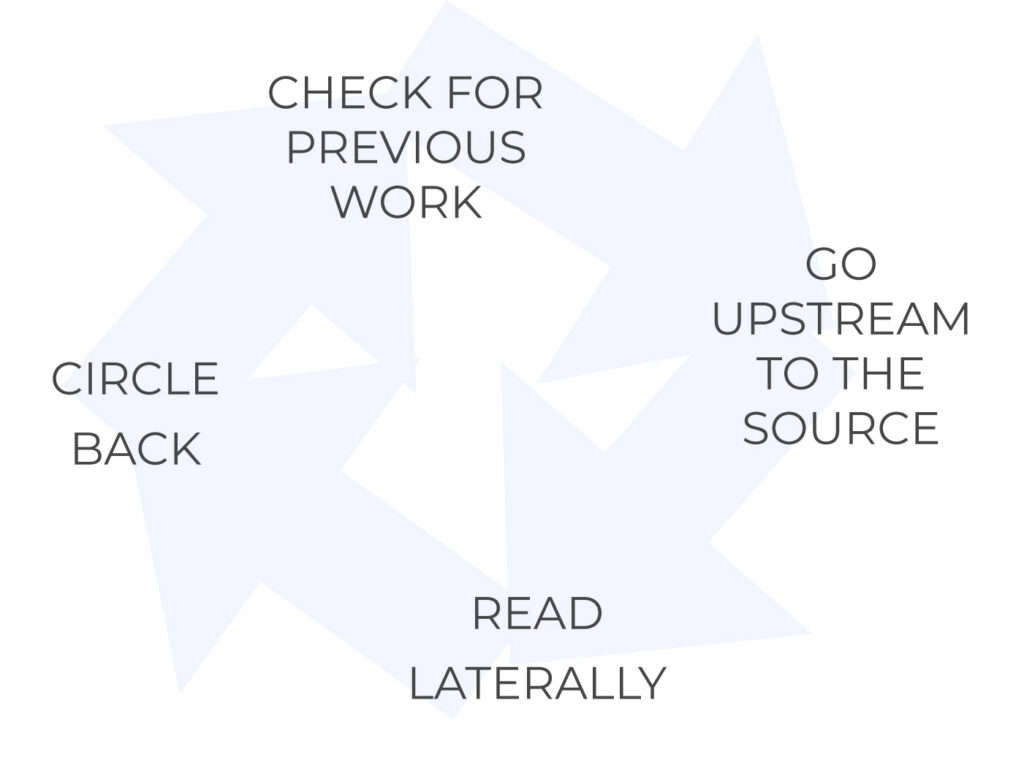29 Assess
Karolyn Zuccarelli
Critically examine potential sources to ensure their relevance, credibility, accuracy, authority, and purpose.
What You’ll Learn:
- How to determine the relevance/usefulness of a source
- How to determine the credibility/authority of a source
You recently read a friend’s social media posting about her daily use of vitamin D. She mentions a number of positive health benefits, ranging from improved cognition to a strengthened immune system. You’ve never heard of vitamin D but wonder about its uses. You do a quick Google search and see a few interesting sites. The first is a paid advertisement from a health and wellness clinic. The next site is a medical journal article by a doctor.
- Who are you more likely to trust with providing health information?
- Would you trust a doctor more than a friend? Why?
Writers can learn something from this example. The source of your information and the credibility of the publication and author matter. Being able to assess the reliability of a source is an integral part of the research process.
The CRAAP Test
It is important to evaluate and assess first, as not all sources are written by authoritative, knowledgeable experts.
In the last section, we discussed the different search results you might encounter when looking for information. For example, some search results will link to paid, corporate advertisements. Some of the information on these web pages may be verified and fact-checked, while other content may not be. Does this mean that this information is not credible? No. It means that it is important to be critical when assessing your sources of information.
One way to assess a source’s content is through the CRAAP test.
| Currency | Is it a recent publication? |
| Relevance | Is it directly on topic? |
| Authority | Do you trust the author or the organization that is presenting the information? |
| Accuracy | Is this quality information? Can you verify it in another source? Is there a citation list? |
| Purpose | Does the author/organization have an agenda? |
The CRAAP test can be applied to all sources found in your search results. Knowing that a source is reliable ensures that you have effectively evaluated your research content (Tucker & Chafe, 2018).
Watch the video above from Western University (2012) on the CRAAP test and answer the questions below:
Let’s use the CRAAP test to assess a source.
Start by viewing the source (Colier, n.d.), then look at the table below.
| Currency | Is it a recent publication? | There is no date on the article. According to the chronology on the author’s site (http://nancycolier.com/read/), it appears to have been published in Fall 2016. |
| Relevance | Is it directly on topic? | This question depends on your research topic. If you are writing about the effects of social media or the effects of technology, then the answer is yes. |
| Authority | Do you trust the author or the organization that is presenting the information? | The author is credible because of her qualifications. She is a psychotherapist and mindfulness teacher. She is also an author with a book published on this same topic. |
| Accuracy | Is this quality information? Can you verify it in another source? Is there a citation list? | There is no citation list provided. However, a link to the author’s book with expanded information on the article’s topic is provided. The author does cite some statistics in the article (“forty-six percent of smartphone users say their phone is something they couldn’t live without” (Collier, 2016, par. 3)). It would be useful to see where/how this information was collected, as well as the size of the study. |
| Purpose | Does the author/organization have an agenda? | The author is promoting her book on the same topic as the article. The article is published by Best Self Media, a digital magazine. |
Assessing Source Relevancy

A relevant source is one that is closely associated with your topic of choice. It is important to assess a source’s relevancy to ensure it aligns with your topic, research question, and purpose for writing.
To assess the relevance of a source:
- Read the source thoroughly and in its entirety.
- Read the source again and take notes.
- Look at the ideas being presented in the source.
- Identify whether the ideas presented support your own research topic.
- Identify the author’s bias, if there is one.
- Analyze the source’s content and writing critically.
- Is it too formal or technical?
- Is it too informal and does it contain slang?
- Did you learn anything new after reading the information?
(Adapted from Loyola Marymount University – William H. Hannon Library, n.d. Additional information adapted from The Learning Portal, 2020)
Assessing Source Credibility and Fact Checking
Information on the internet can seem believable and authoritative. But until you assess the credibility of the information’s source, you can’t know whether its claims are complete, accurate, and true.
In the Critique chapter, you were introduced to a strategy, adapted from Michael A. Caulfield’s Web Literacy for Student Fact-Checkers (2017), that explains four steps you can take to check the credibility of a source.
View the source.
Now let’s explore those four steps in more detail.


Let’s circle back to one of the examples from the previous subtopic: the New York Times article “The Electric Car Revolution” (2017). You can read the source here.
Step 1: “Check for previous work” (Caulfield, 2017, para. 3).
The article cites a number of reputable organizations and publications to authenticate the facts being claimed. Some of the other publications cited in the article include:
- Department of Energy
- International Energy Agency
- Bloomberg New Energy Finance
Step 2: “Go upstream to the source” (Caulfield, 2017, para. 3).
We can verify the credibility of the source as the piece is published by the New York Times. The New York Times is a reputable news agency that fact-checks data and staffs writers with credentials and expertise.
Step 3: “Read laterally” (Caulfield, 2017, para. 3).
When researching online, you are probably familiar with having multiple tabs open within your computer browser. This is an example of lateral research. When verifying credibility and fact-checking data, be sure to look at what other authors and researchers are saying in regards to the source. Have multiple tabs open! Cross-check the information being presented (Younger, 2018).
The “Electric Car Revolution” (2017) article links to a number of credible, external resources through an “explore area” in the database. Some of the articles include:
(Ecology, Environment & Conservation, 2020).
- “Green car sales signal the death of diesel”(The Times London, 2020).
Step 4: “Circle back” (Caulfield, 2017, para. 3).
Remember, it’s ok to get lost or confused when comparing and contrasting various opinions and sources. This is especially true when you are engaging
critically with a source. Know that once you’ve done this process once, you will be better equipped to do it again for the next source.
When reading laterally, ask:
- Are there critiques of the source?
- Are there different interpretations of the data?
- Are there opinions being presented?
Try It!
Recognize some key characteristics of searching for and identifying reliable sources in the following activity.
This subtopic covered what it means to assess a source for quality, relevant, and authoritative information. We explored some steps you can use to assess a source, such as:
- The CRAAP test
- Looking for context
- Incorporating fact-checking
References
See Assess References
Discerning;, practising careful reasoning and judgment.
Informal language, typically limited to and understood by a particular group, the “insiders” who know that language.
Discerning; practising careful reasoning and judgment.

